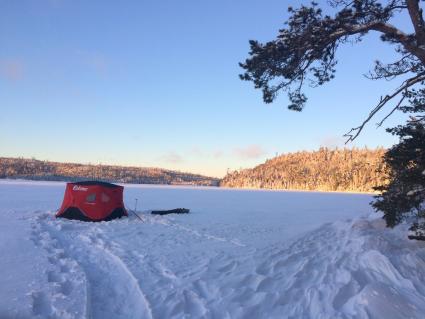Climate change and its impact on inland lakes near Lake Superior
Inland lakes near the North Shore of Lake Superior are indeed some of the clearest, coldest and deepest bodies of water in Minnesota. That being the case, climate change, University of Minnesota Professor Mae Davenport and many other researchers across the region warn, is in the process of changing the character of these lakes. From water temperature, to what lives near and in the lakes could change in the coming decades. At greatest risk from the threats of climate change among the native fish population are a treasured species: the lake trout.
According to the DNR, lake trout need clean, cold water to survive. With that in mind, the easiest way to think about climate change and what it could mean for lake trout is this: As the water in Minnesota’s many lakes warms, living space for cold-water fish is lost.
And while lake trout will likely struggle through a warming climate, other species coveted by anglers might actually do well with warming waters. Walleye and smallmouth bass do not require the cold water lake trout need to thrive. Non-native species for many of the lakes in the Boundary Waters, smallmouth are great in summer months but essentially go dormant in the winter months. So in that sense, it’s ice anglers who could feel the loss or changes to the population of lake trout the most.
In this final installment of WTIP’s series focusing on climate change and its impact on North Shore fisheries, we explore the threats a changing climate has on inland lakes found near Lake Superior.
Tweet







